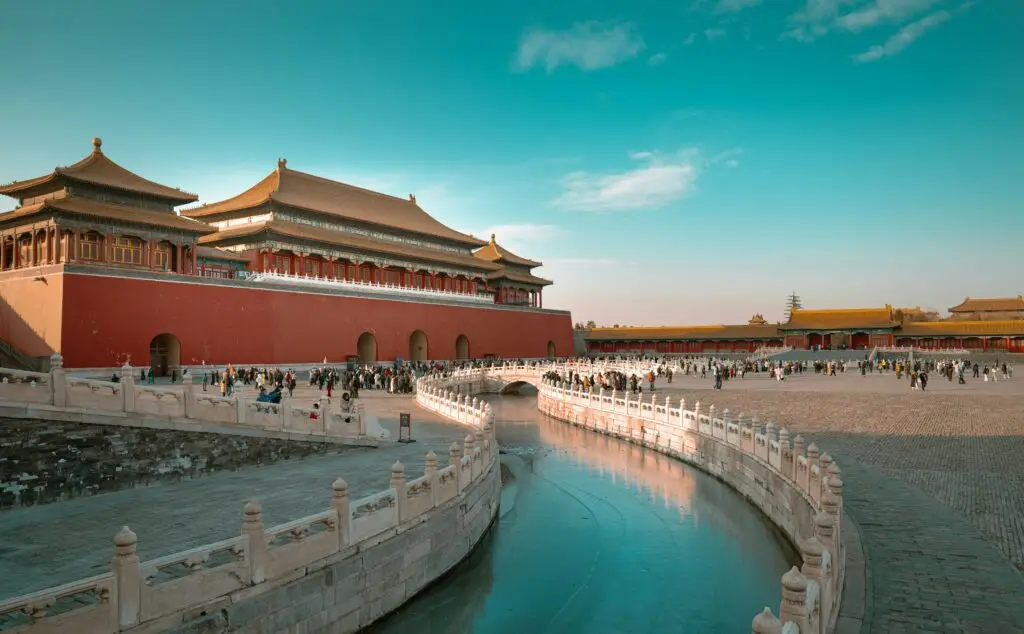If there is one place in China that truly feels like stepping into a traditional ink painting, it’s Huangshan — the Yellow Mountain. I had seen countless Chinese scrolls and paintings depicting misty peaks, gnarled pines, and seas of clouds, but standing there in person was something else entirely.
The journey began in Tunxi, the gateway town to Huangshan. From there, a short bus ride brought me to the base of the mountain. I could have taken the cable car up, but I decided to climb on foot. The stone steps wound steeply upward, and though my legs protested, each turn revealed views more breathtaking than the last — granite cliffs rising dramatically, wrapped in a soft veil of mist.
Halfway up, I stopped to catch my breath under one of the mountain’s famous pine trees. The locals call them “Guest-Greeting Pines,” as if the trees themselves are bending in a bow to welcome travelers. In that moment, I felt not like a tourist, but like a guest in a sacred, ancient place.
When I finally reached the top, the landscape was otherworldly. Peaks pierced through a rolling sea of clouds, their jagged silhouettes glowing in the sunlight. The air was crisp, cool, and surprisingly still — the kind of silence that makes you feel both small and deeply connected to nature.
Hiking along the ridge, I passed names that sounded almost poetic: “Lotus Peak,” “Celestial Capital,” “Bright Summit.” Each viewpoint had its own character, and with the shifting mist, the mountain seemed to reinvent itself every few minutes. No wonder poets and artists have drawn inspiration here for over a thousand years.
What surprised me most was that people actually live and work up there. Small hotels and guesthouses dot the higher trails, offering a place to rest with views that rival any luxury resort. At sunrise, I joined a group of travelers on a terrace, all of us wrapped in jackets against the chill. When the first rays of gold broke through the horizon and lit up the “sea of clouds,” the whole crowd erupted in awe. It was one of those rare moments where strangers became friends, bound by a shared sense of wonder.
Yellow Mountain is more than just scenery; it is a cultural symbol. Ancient poets like Li Bai and painters of the Ming and Qing dynasties immortalized these landscapes in verse and ink. Even the famous phrase “五岳归来不看山,黄山归来不看岳” — “After visiting the Five Great Mountains, one doesn’t need to see other mountains; after visiting Huangshan, one doesn’t need to see the Five” — speaks to its unparalleled beauty.
Practical Tips for Travelers
Best Time to Visit: Spring and autumn are ideal. Winter offers snowy peaks and fewer crowds, but trails can be icy.
How to Get There: Take a high-speed train or flight to Huangshan City (Tunxi), then transfer to the scenic area.
Hiking vs. Cable Car: If you have the stamina, hike up at least once — the steps are steep but rewarding. The cable cars save time and energy, especially if you want to catch the sunrise.
What to Bring: Good walking shoes, layered clothing, snacks, and water. A light raincoat is useful since the mountain is often misty.
Stay Overnight: Spending the night on the mountain allows you to see both sunrise and sunset — two of Huangshan’s most magical moments.
Traveling to Yellow Mountain felt like entering a living piece of China’s cultural heritage. It wasn’t just the views — though they were spectacular — but the way the mountain carried history, art, and philosophy in its very stones and clouds. As I made my way down, legs sore but heart full, I knew why so many have called Huangshan one of the most beautiful places on Earth.
It’s not just a destination — it’s an experience of awe, reflection, and timeless beauty.

